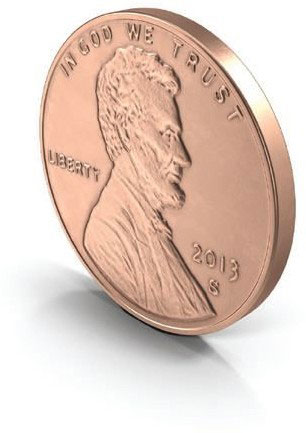THE HIJACKING OF HIGH PAYBACK
The penny denomination has made the lowest-returning slots the most popular on the floor
By Frank Legato
 Ever since the first issue of Casino Player was published in 1988, this magazine has directed players to the fairest gambles—meaning the best odds and highest returns—on the casino floor. In the pit, that means baccarat, craps and skilled blackjack. On the slot floor, that means video poker and select categories of slot machines.
Ever since the first issue of Casino Player was published in 1988, this magazine has directed players to the fairest gambles—meaning the best odds and highest returns—on the casino floor. In the pit, that means baccarat, craps and skilled blackjack. On the slot floor, that means video poker and select categories of slot machines.
For most of our first two decades, discerning players who read this magazine and our sister publication, Strictly Slots, have followed our advice on those “select categories” of slot machines. Traditionally, smart players looking for the highest payback percentages have found them in the higher denominations—the sweet spot being three-reel, mechanical-style slot machines in the dollar denomination.
Those games typically return 94 percent or more of all wagers to players in the form of winnings. Some mechanical reel-spinning games—particularly, in the $2, $5 and higher denominations—have returned 98 percent or even 99 percent of all wagers. The strategy for casinos in offering these higher returns to players was always that the 1 percent or 2 percent casino “hold”—the portion of wagers kept by the casinos as profit—more than makes up for all those payouts when you’re discussing average bets of $3, $5, $15 or more per spin.
But something happened to those assumptions just after the turn of the 21st century: payback-percentage strategy was hijacked. And the culprit was the penny denomination.
The penny slot denomination came to prominence with the advent of the ticket-in/ticket-out payment method. Payback percent- ages had dipped a bit with the nickel denomination, dropping to around 90 percent or 91 percent. The problem with nickels from a casino operator’s perspective, though, was that most payouts had to be kept relatively low, for reasons more related to physics than anything else.
The hopper in a coin machine could only hold so many nickels, so when payouts were large but not large enough for a hand pay, invariably, the hopper would empty. The game would sit idle while the player waited (for a seemingly endless period) for a slot attendant to bring over a sack of coins to refill the hopper. And if there’s one thing a slot manager hates, it’s an idle slot machine.
Ticket payouts solved all that. Suddenly, a game could offer massive credit payouts. A 10,000-credit win, after all, was only $100, and these new penny games could offer jackpots that were hundreds of thousands of credits. Never mind how rare those jackpots were. The fact that they were attainable on a penny machine was enough to send players flocking to the games.
The low denomination also allowed manufacturers to offer math programs that were infinitely more volatile than the old nickel games. Large credit awards could be made more frequent because the unit wager was a penny. Consequently, players increased their wagers to catch one of those big jackpots. Average bets on penny games rose to the levels being wagered on those high-returning dollar games. If a $3 bet could garner a $10,000 progressive, why not?
The reason “why not” is that the casino operators began ordering programs for penny games that were closer to the legal minimum as far as payback percentage. Average returns on penny games these days are more in the range of 88 percent or less. Yet, since players love the volatile programs and love those huge credit awards, they still flock to them, payback be damned.
As I’ve written before in this space, this is really the equivalent of price-gouging on the part of the casinos. Operators know players love these games, so they have maintained the high price of playing them. It’s classic supply-and-demand. As long as the market is willing to pay this higher price to play penny games, at least the big tourist casinos will continue to place them on the floor.
There are, of course, exceptions, typically in the Las Vegas locals casinos. But even many of those casinos maintain a penny-game policy that offers much lower returns than traditional games.
Players have definitely noticed. Many have turned away from the slot floor because of the low returns, because in the end, their slot bankrolls are not lasting as long as in the past.
My advice to slot players has always been to pick the games you most enjoy playing. If you’d rather play a volatile multi-line penny game than a traditional three-reeler, go for it. But if you’re looking for higher overall returns, at least pick a locals casino like the South Point in Las Vegas (my go-to place), or develop a taste for some of the many traditional three-reel, mechanical-style slots that are still out on the floor.
In other words, play what you enjoy, but buyer beware.


